View this article in another language
- 한국어
- English
- 日本語
- 中文
- العربية
- Español
- Français
- Deutsch
- Pусский
- Tiếng Việt
- Indonesian
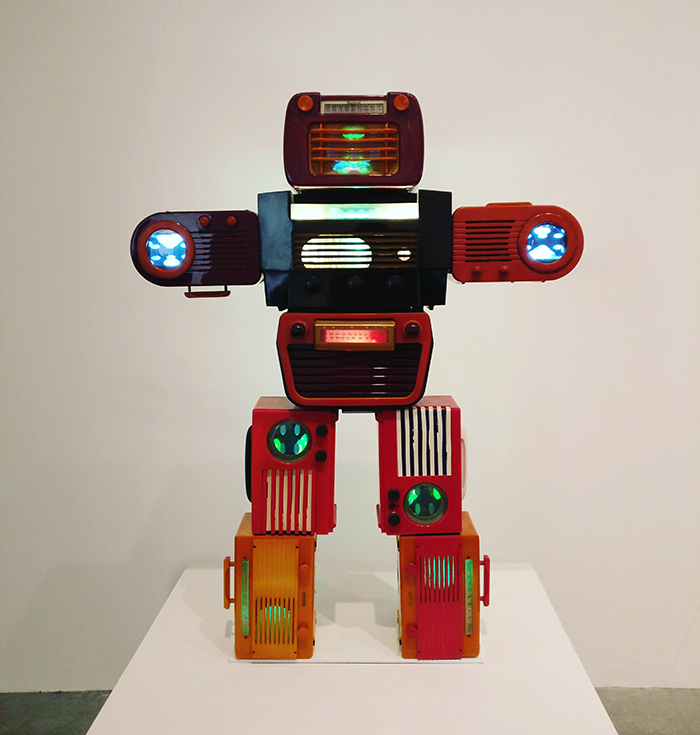
The world's most famous Korean artist is Nam June Paik's 'Bakelite Robot' is on display at Tate Modern in London.
By Korea.net Honorary Reporter Emilia Kircheva from Bulgaria
Photos = Emilia Kircheva
South of the Millennium Bridge in London, directly across the Thames River from St. Paul's Cathedral, is situated the Tate Modern, the U.K.'s national gallery for international modern art. A visit to the U.K. capital is not truly complete without a trip to the Tate Modern, as one may say that it holds the finest display of international modern art in the whole of the U.K. Visitors to the gallery can see amazing pieces for free by artists such as Cézanne, Bonnard, Matisse, Picasso, Rothko, Dalí, Pollock, Warhol, Bourgeois and many others.
On Level 4 of the Tate Modern there's a Media Networks display that aims to show responses of artists to the public influence of technologies and mass media that have changed and evolved over the past 100 years. Among the 12 sections of the exhibition, seven have an artist's name in their title. Nam June Paik is one of them. The exhibition shows works of the Seoul-born artist that were utterly groundbreaking in their time. Working with radios, televisions, robotics and computers, the artist explored humanity’s ever-changing relationship with technology.
Nam June Paik's room at the Tate Modern gives us an insight into the progressive ideas of the founder of video art, an artist who had foreseen the role of communication technologies in our lives and whose artistic methods still shape the contemporary visual culture. The exhibition incorporates works spanning 40 years of the artist’s career and shows the diversity of his work.
Paik's fascination with the figure of the robot can be seen in "Bakelite Robot" (2002). Stacked vintage radios form the shape of a humanoid robot. Paik customized the radios to screen a videotape specifically developed for the work, composed of footage from robot and science fiction films, recordings of vintage robot toys and footage from earlier video edits.
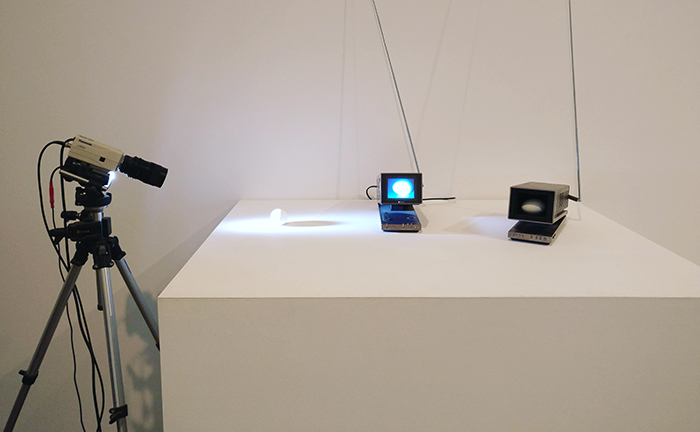
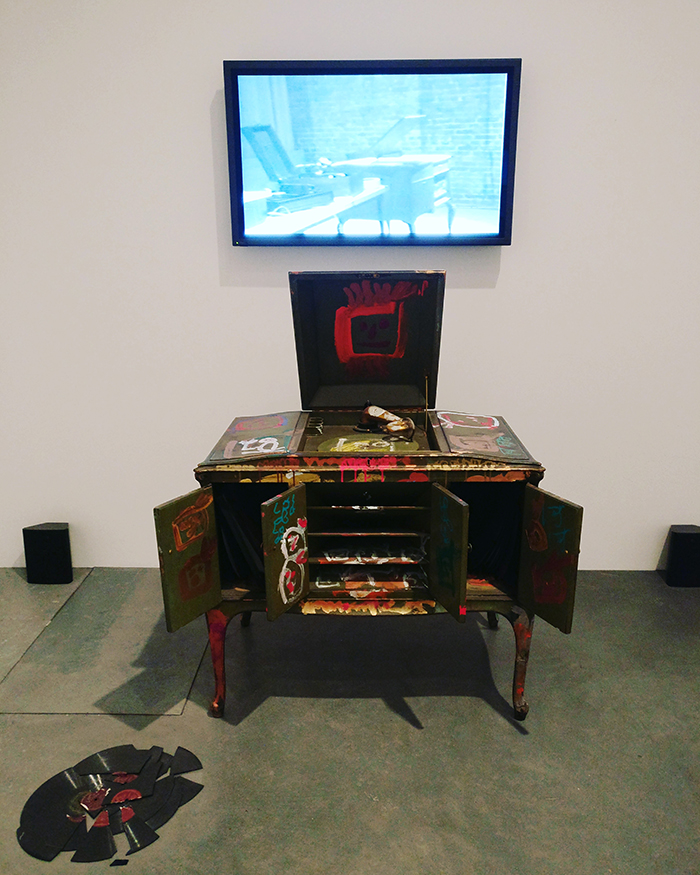
The works of art 'Three Eggs' and 'Victrola' are on display at the Tate Modern.
In "Nixon" (1965-2002), the artist wraps and distorts the most significant television images of Richard Nixon’s presidency with the use of magnetic coils attached to the screens. The piece "Three Eggs" (1975-1982) is a CCTV triptych in which an egg is watched by a video camera and transmitted live to a nearby monitor. A second television receiver displays a real egg where the removed television tube should be, to seemingly mirror the transmission.
"Victrola" (2005) is a sculptural installation consisting of a Victrola, a wooden cabinet with an integrated gramophone, placed beneath a large plasma screen. The monitor screens footage of an early performance by Nam June Paik in which he breaks a vinyl record. The cabinet is painted with abstract shapes and a small pile of broken vinyl records lies on the floor in front of it.
The exhibition includes also a group of Paik's rarely seen works on paper, consisting of drawings in pencil, pastel and ink. They offer an insight into his working methods and the development of his experimental ideas.
A picture of Paik can also be found in the Explore section of the studio at the Tate Modern, which gives us a glimpse inside the working spaces of artists. Considering the picture was taken in 1999, his studio seems way ahead of its time and we can only imagine on which of his groundbreaking pieces he was working at that time.
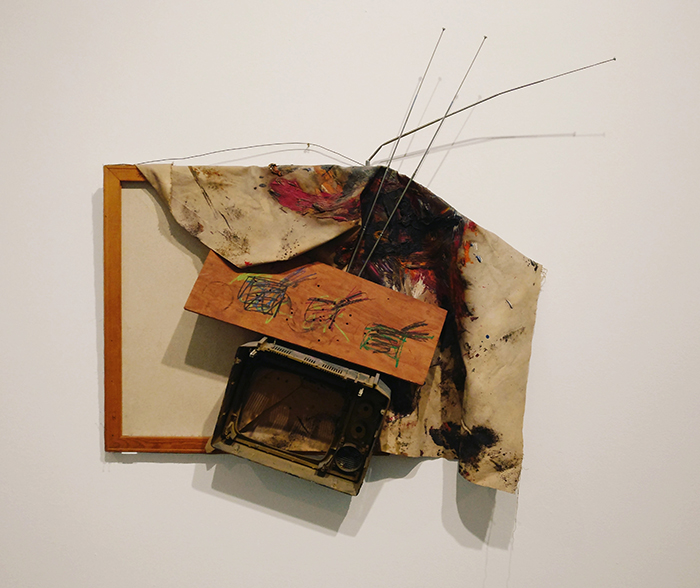
Nam June Paik's works give visitors a glimpse of his world.
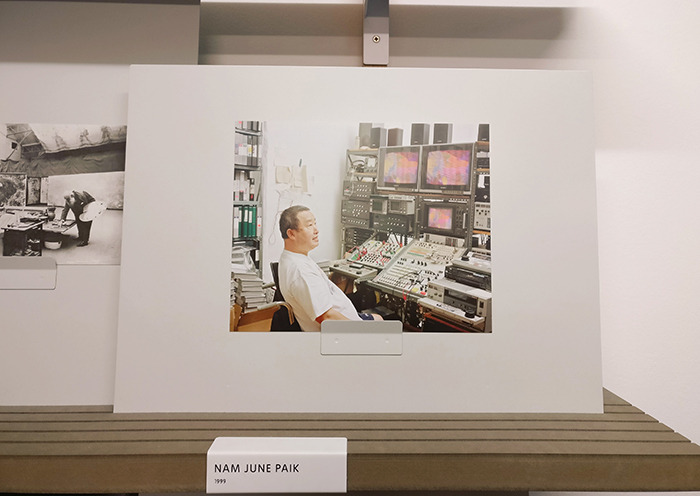
Nam June Paik's picture is in the Explore section in the studio display room.
wisdom117@korea.kr
* This article is written by a Korea.net Honorary Reporter. Our group of Honorary Reporters are from all around the world, and they share with Korea.net their love and passion for all things Korean.
